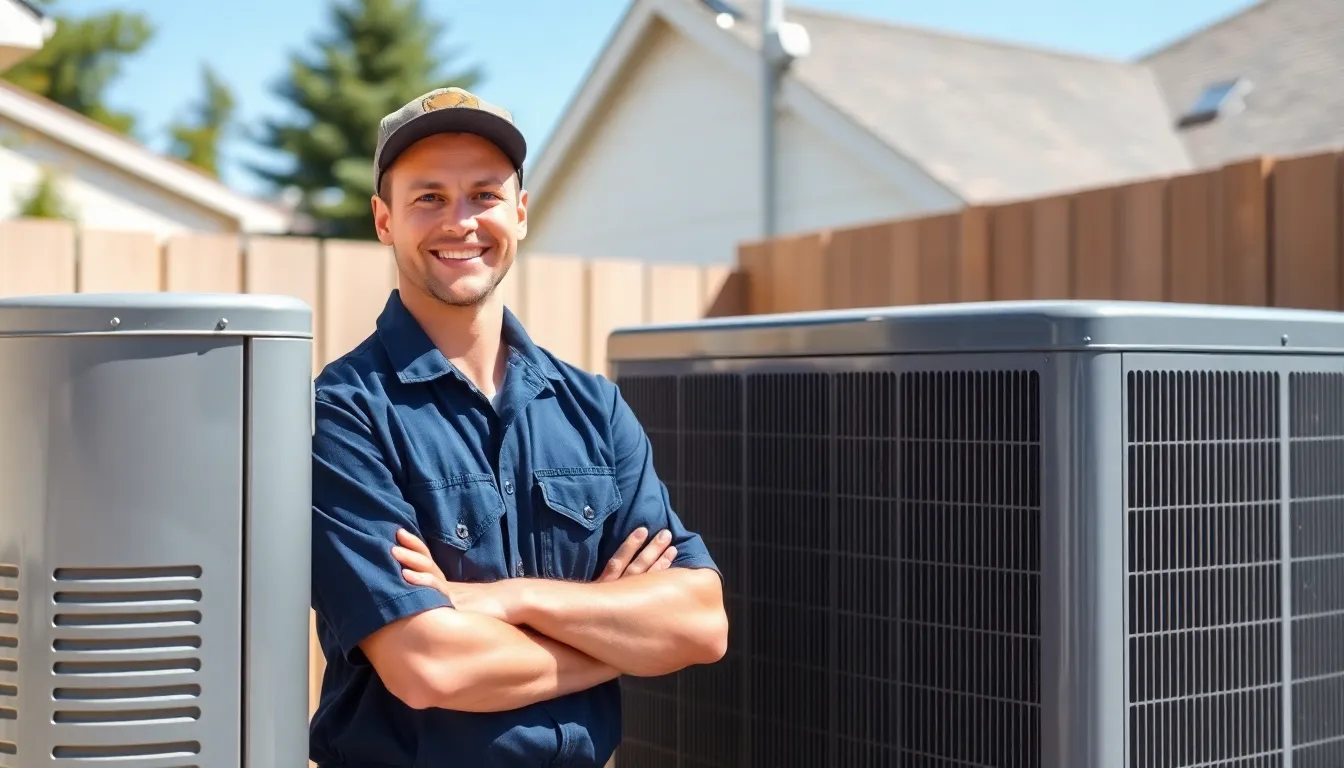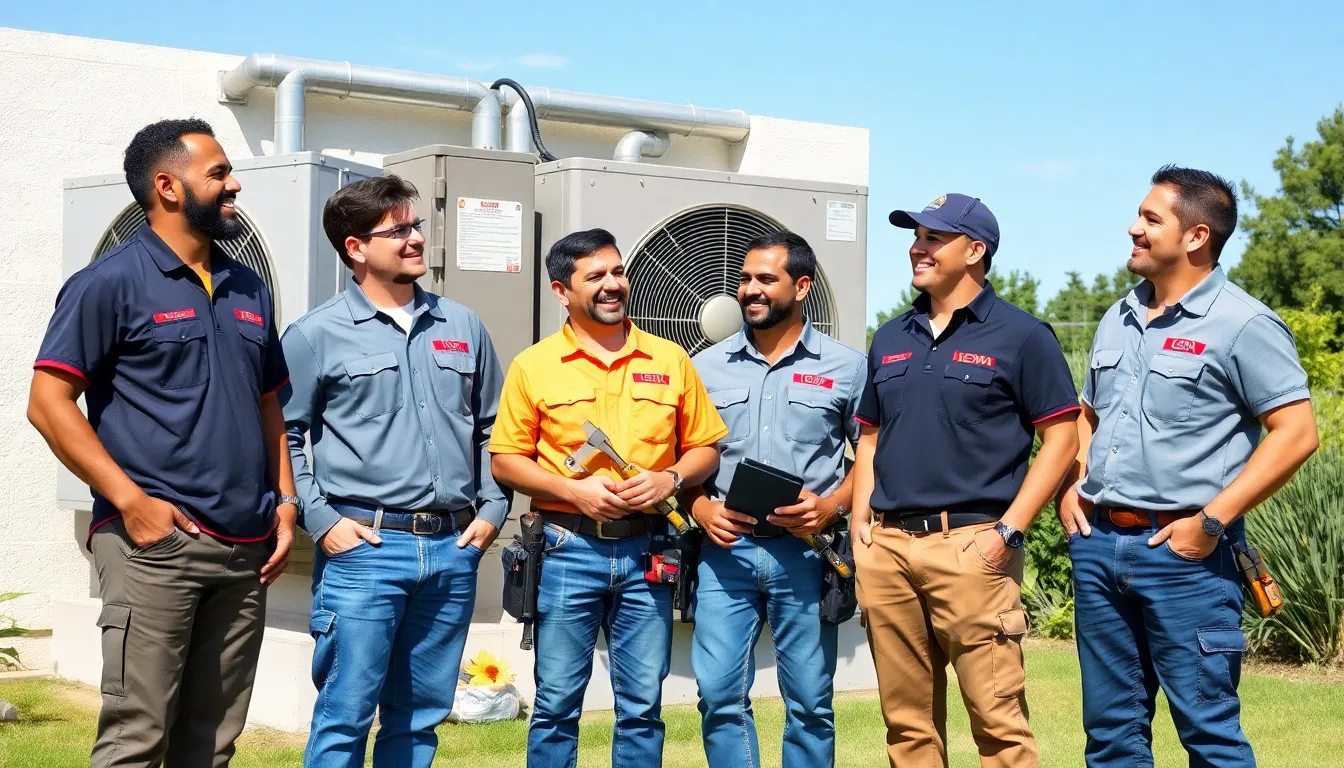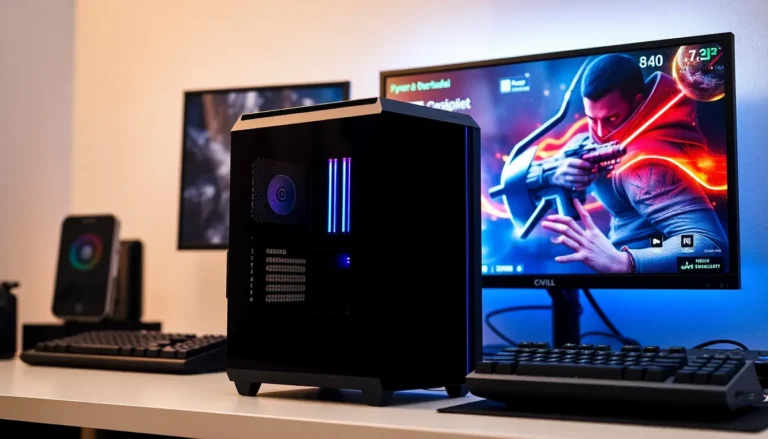Table of Contents
ToggleIn today’s digital world, HVAC companies can’t afford to ignore social media. It’s not just about fixing air conditioners and heating systems anymore; it’s about creating a buzz that keeps customers coming back for more. Imagine your business not just being the go-to for cooling and heating but also the talk of the town online.
With the right social media strategy, HVAC businesses can showcase their expertise, engage with customers, and even share a few laughs along the way. After all, who doesn’t enjoy a good meme about a broken thermostat? By tapping into social media, HVAC professionals can build a loyal community while turning potential clients into lifelong fans. So let’s dive into the world of HVAC social media and see how it can transform the way these businesses connect with their audience.
Understanding HVAC Social Media
HVAC companies leverage social media to enhance their market presence and connect with customers effectively. Engaging online interactions bolster brand visibility and customer loyalty.
Importance of Social Media for HVAC Businesses
Social media serves as a powerful marketing tool for HVAC businesses. Companies showcase expert knowledge, promote unique services, and respond to customer inquiries instantly. Creating engaging content helps attract new clients while retaining existing ones. Posts highlighting seasonal promotions or tips for energy efficiency encourage interaction. Humorous content, like memes about HVAC challenges, can further strengthen community bonds. When companies commit to regular updates, they foster trust among clients, leading to improved customer relationships and sustained growth.
Key Platforms for HVAC Marketing
Several platforms excel in HVAC marketing, enabling companies to target diverse audiences. Facebook allows for in-depth customer interaction and advertisement targeting, making it ideal for local businesses. Instagram focuses on visual storytelling; companies can post images of completed installations and behind-the-scenes footage. LinkedIn serves as a professional networking platform, connecting industry experts and potential partnership opportunities. Twitter’s quick updates and real-time engagement foster ongoing dialogue with customers. TikTok’s short-form videos offer creative opportunities for HVAC humor and educational content, captivating a younger audience.
Strategies for Effective HVAC Social Media Marketing

Engaging effectively on social media requires strategic planning and creativity. HVAC companies must prioritize the creation of content that resonates with their audience while showcasing expertise.
Content Ideas for Engagement
Promoting seasonal tips can capture audience interest. Posts featuring maintenance checklists enhance customer awareness and encourage proactive engagement. Sharing client testimonials builds trust and credibility. Visual content, such as before-and-after photos of installations, illustrates the quality of services provided. Hosting live Q&A sessions allows real-time interaction and showcases knowledge. Creating humorous memes about common HVAC issues adds relatability and makes information sharing enjoyable. Regularly addressing frequently asked questions fosters ongoing dialogue and positions the brand as a helpful resource.
Best Practices for Posting
Posting regularly keeps the audience engaged and informed. Utilizing a mix of content types, such as videos, images, and infographics, appeals to different preferences. Timing matters; posting during peak engagement hours increases visibility. Engaging with follower comments and messages promotes community interaction. Additionally, using relevant hashtags expands reach and connects with target demographics. Collaborating with local businesses or influencers can broaden audience exposure. Tracking performance metrics enables refinement of strategies based on audience engagement and preferences.
Analyzing Success on Social Media
Analyzing the impact of social media on HVAC companies requires a keen focus on measurable outcomes. Companies must identify relevant metrics to assess their effectiveness.
Metrics to Track
Engagement metrics provide valuable insights into audience interaction. These include likes, shares, and comments that reflect post performance. Tracking follower growth helps gauge overall interest and brand reach. Monitoring click-through rates on promotional content reveals the effectiveness of calls to action. Conversion rates indicate how many social media interactions translate into leads or sales, highlighting the return on investment. Regularly assessing these metrics allows HVAC companies to adjust strategies and enhance customer connection.
Tools for Monitoring Performance
Several tools simplify the monitoring process. Google Analytics tracks website traffic from social media sources, offering comprehensive insights into user behavior. Hootsuite provides an all-in-one platform for managing multiple accounts while analyzing engagement trends. Buffer allows scheduling and performance analysis of posts across various channels, streamlining marketing efforts. Sprout Social presents in-depth analytics and reporting features to assess brand performance effectively. Utilizing these tools enables HVAC businesses to refine their social media strategies based on real-time data.
Challenges in HVAC Social Media
HVAC companies face various challenges when navigating social media. Identifying and overcoming these obstacles proves essential for establishing a strong online presence.
Common Pitfalls to Avoid
Relying solely on promotional content limits engagement. Variety keeps audiences interested. Posting inconsistently can confuse followers, leading to disengagement. Ignoring comments and messages signals a lack of responsiveness, which diminishes brand trust. Overlooking analytics tools prevents companies from understanding their audience’s preferences. Engaging with followers through meaningful content enhances brand loyalty. Many HVAC companies focus only on sales, neglecting educational content that could inform and engage potential customers.
Handling Negative Feedback
Receiving negative feedback poses a unique challenge. Responding promptly can mitigate damage and demonstrate commitment to customer satisfaction. Emphasizing empathy shows understanding of customers’ concerns. Using negative comments as an opportunity for improvement can strengthen brand reputation. Companies should avoid deleting negative reviews, as transparency builds trust. Addressing issues publicly can showcase problem-solving abilities and customer-oriented service. Encouraging satisfied customers to share their positive experiences helps balance the narrative.
HVAC companies have a unique opportunity to thrive in the digital age by harnessing the power of social media. By engaging with customers and showcasing their expertise, these businesses can build lasting relationships that lead to increased loyalty and trust.
Creative content and strategic planning are essential for standing out in a crowded market. Regularly assessing performance metrics ensures that HVAC companies can adapt their approach to meet audience needs effectively.
With the right tools and a commitment to genuine interaction, HVAC professionals can transform their social media presence into a valuable asset that drives growth and success.




